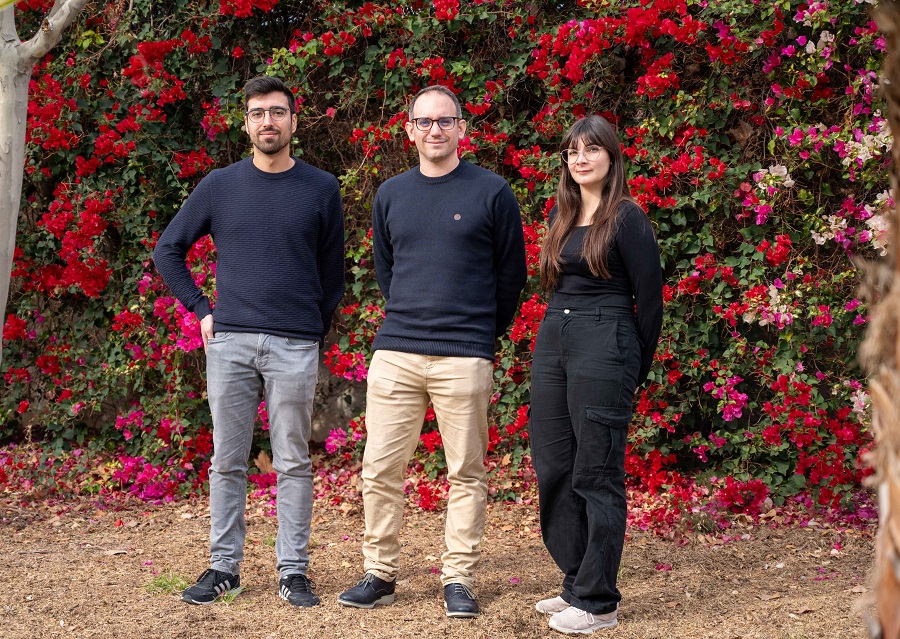Lines of investigation
Emerging Line of the group: “Development, Plasticity and Reprogramming of Sensory Circuits”
The complexity of the nervous system relies fundamentally on the great diversity of its basic units, the neurons. The identity of specific cell types in the nervous system is defined early in development by unique transcriptional programs that are actively maintained throughout an organism’s life. Changes in neuronal identity, such as gene expression or epigenetic modifications, are crucial for the plasticity of the nervous system. These changes can modify synaptic connectivity and neuronal function, which in turn can contribute to nervous system adaptation and the ability to learn and remember information. Defects in the acquisition and maintenance of neuronal identity can result in severe neurodegenerative and neuropsychiatric conditions, including Alzheimer’s disease and Parkinson’s disease. Therefore, elucidating the molecular mechanisms controlling neuronal identity is essential for understanding how to maintain a healthy and functional nervous system.
Our group aims to understand how neurons acquire and maintain their specific neuronal identity, and apply this knowledge to brain repair. To this aim, our group utilizes both C. elegans and rodent models, in combination with genomic, genetic, behavioral and microscopy techniques to understand the transcriptional and chromatin-based mechanisms of neuronal development and specification. The group takes advantage of the genetic tools of C. elegans to explore new molecular interactions and discover new fate determinants. We then use our expertise in vertebrates to study functional conservation in mouse, and use cellular reprogramming models aiming to generate specific neuron types for brain repair. More broadly, the aim of the lab is to conduct rigorous science in an enjoyable and exciting environment, promoting strong mentorship, scientific outreach and diversity.
Representative Publications
- Alternative splicing controls pan-neuronal homeobox gene expression Leyva-Díaz E, Cesar M, Pe K, Jordá-Llorens JI, Valdivia J and Hobert O. Genes & Development. 2025 39:(3-4), 209–220 https://doi.org/10.1101/gad.352184.124
- Development has the answer: Unraveling psychiatric disorders via thalamocortical organoids. Eduardo Leyva-Díaz, Emily S. Wilson, Guillermina López-Bendito Cell Stem Cell. 2024 31(3): p283-284 https://doi.org/10.1016/j.stem.2024.02.008
- CUT homeobox genes: transcriptional regulation of neuronal specification and beyond. Leyva-Díaz E. Frontiers in Cellular Neuroscience. 2023 (in press)
- Robust regulatory architecture of pan-neuronal gene expression. Leyva-Díaz E and Hobert O Curr Biol. 2022 32(8): 1715-1727.e8 https://doi.org/10.1016/j.cub.2022.02.040
- Brn3/POU-IV-type POU homeobox genes-Paradigmatic regulators of neuronal identity across phylogeny. Leyva-Díaz E, Masoudi N, Serrano-Saiz E, Hobert O. Wiley Interdiscip Rev Dev Biol. 2020 9(4): e374. https://doi.org/10.1002/wdev.374
- Transcription factor autoregulation is required for acquisition and maintenance of neuronal identity Leyva-Díaz E and Hobert O. Development. 2019 146(13): dev177378 https://doi.org/10.1242/dev.177378
- BRN3-type POU Homeobox Genes Maintain the Identity of Mature Postmitotic Neurons in Nematodes and Mice. Serrano-Saiz E, Leyva-Díaz E, De La Cruz E, and Hobert O. Curr Biol. 2018 28(17): 2813-2823.e2 https://doi.org/10.1016/j.cub.2018.06.045
- FLRT3 Is a Robo1-Interacting Protein that Determines Netrin-1 Attraction in Developing Axons Leyva-Diaz E, del Toro D, Menal MJ, Cambray S, Susin R, Tessier-Lavigne M, Klein R, Egea J, Lopez-Bendito G Curr Biol 2014 24(5):494 https://doi.org/10.1016/j.cub.2014.01.042
- Alternative splicing controls pan-neuronal homeobox gene expression Leyva-Díaz E, Cesar M, Pe K, Jordá-Llorens JI, Valdivia J and Hobert O. Genes & Development. 2025 39:(3-4), 209–220 https://doi.org/10.1101/gad.352184.124
- Development has the answer: Unraveling psychiatric disorders via thalamocortical organoids. Eduardo Leyva-Díaz, Emily S. Wilson, Guillermina López-Bendito Cell Stem Cell. 2024 31(3): p283-284 https://doi.org/10.1016/j.stem.2024.02.008
- CUT homeobox genes: transcriptional regulation of neuronal specification and beyond. Leyva-Díaz E. Frontiers in Cellular Neuroscience. 2023 (in press)
- Robust regulatory architecture of pan-neuronal gene expression. Leyva-Díaz E and Hobert O Curr Biol. 2022 32(8): 1715-1727.e8 https://doi.org/10.1016/j.cub.2022.02.040
- Brn3/POU-IV-type POU homeobox genes-Paradigmatic regulators of neuronal identity across phylogeny. Leyva-Díaz E, Masoudi N, Serrano-Saiz E, Hobert O. Wiley Interdiscip Rev Dev Biol. 2020 9(4): e374. https://doi.org/10.1002/wdev.374
- Transcription factor autoregulation is required for acquisition and maintenance of neuronal identity Leyva-Díaz E and Hobert O. Development. 2019 146(13): dev177378 https://doi.org/10.1242/dev.177378
- BRN3-type POU Homeobox Genes Maintain the Identity of Mature Postmitotic Neurons in Nematodes and Mice. Serrano-Saiz E, Leyva-Díaz E, De La Cruz E, and Hobert O. Curr Biol. 2018 28(17): 2813-2823.e2 https://doi.org/10.1016/j.cub.2018.06.045
- FLRT3 Is a Robo1-Interacting Protein that Determines Netrin-1 Attraction in Developing Axons Leyva-Diaz E, del Toro D, Menal MJ, Cambray S, Susin R, Tessier-Lavigne M, Klein R, Egea J, Lopez-Bendito G Curr Biol 2014 24(5):494 https://doi.org/10.1016/j.cub.2014.01.042
- In and Out from the Cortex: Development of Major Forebrain Connections Leyva-Diaz E, Lopez-Bendito G Neuroscience 2013 254:26 https://doi.org/10.1016/j.neuroscience.2013.08.070

 Español
Español
